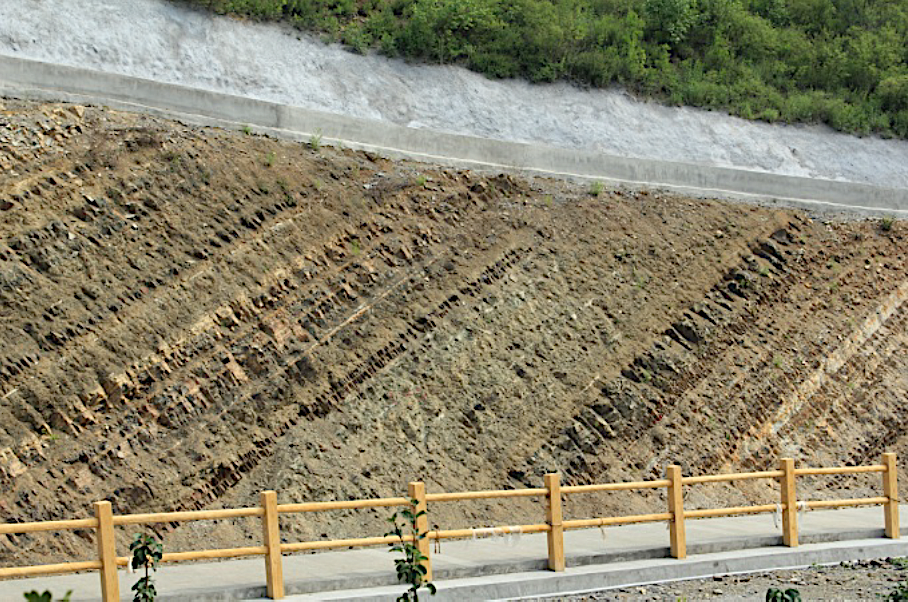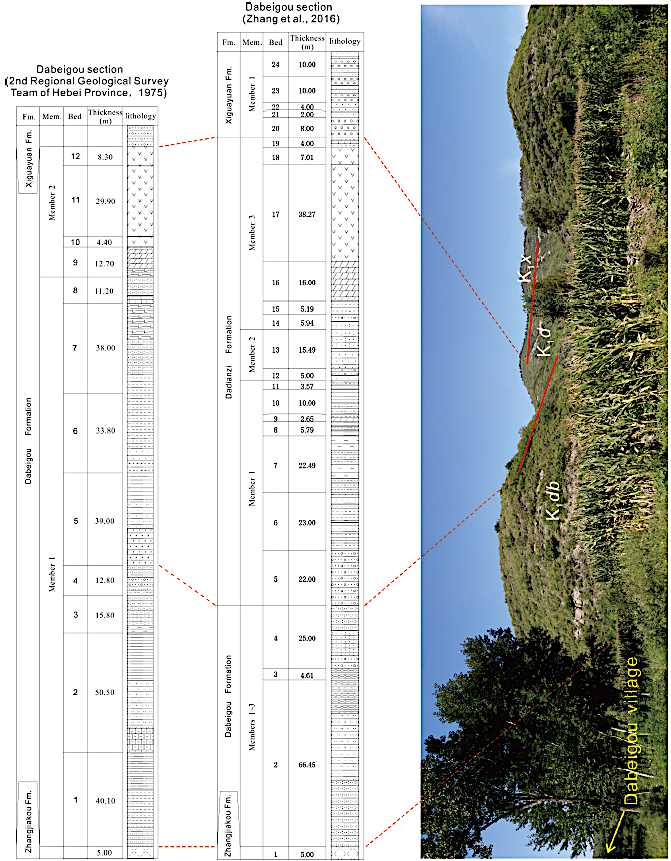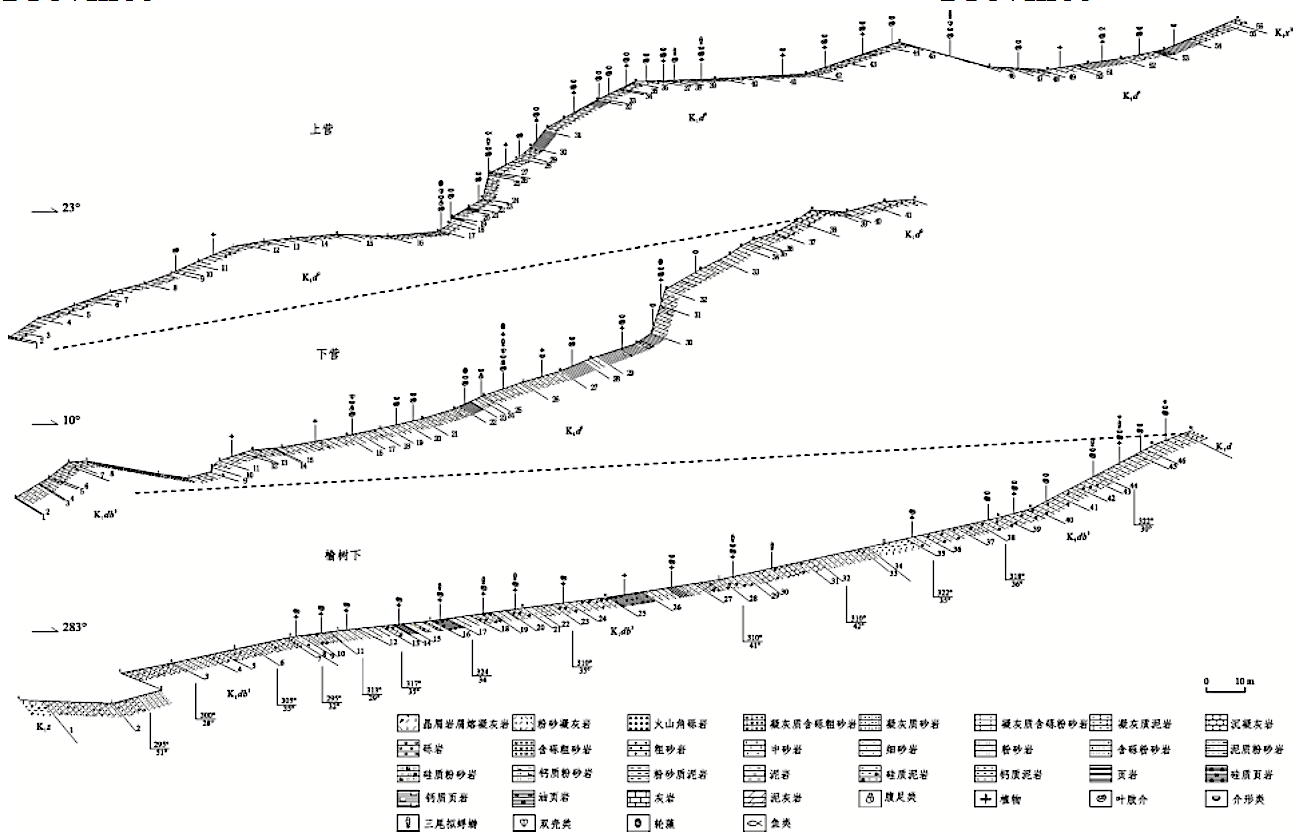Dabeigou Fm
Type Locality and Naming
N. Hebei. The Dabeigou Formation was proposed by the Second Geological Team of Heibei Province in 1975. The original type section is in north of the Dabeigou Vallage of the Luanping County, Hebei Province(117°17'50"; 40'51'05").
Wang Sien (1990) divided the Dabeigou Formation into the Dabeigou Formation (narrow) and Dadianzi Formation in the Luanping Basin. The strata of the Dabeigou and Dadianzi formations are continuous exposed and of uniform lithology, the present lexicon remains the nomination of Dabeigou Formation for the general sequence.
Lithology and Thickness
The Dabeigou Formation mainly consists of lacustrine clastic depositions. The formation is divided into 3 members in ascending order. The Member 1 is a group of grayish green tuffaceous sandstone and siltstone, 34-35 m in thickness. The Member 2 consists of grayish brown coarse sandstone and siltstone intercalated with clay beds, yielding abundant conchostracan and insect fossils, with maximum thickness of 86.76 m. The Member 3 is dominated by yellowish green and brown silty mudstone, intercalated with siltstone, yielding abundant conchostracan, ostracode, bivalves and gastropods fossils. The maxium thickness of member 3 is 98.96 m.
[Figure: Division and correlation of Dabeigou Formation in Luanping basin, northern Hebei]
[Figure: 2nd Member of Dabeigou Formation in Yushuxia section, Luanping basin, northern Hebei]
[Figure: 3rd Member of Dabeigou Formation in Yushuxia section, Luanping basin, northern Hebei]
Relationships and Distribution
Lower contact
The basal part of present formation consists of conglomerate, being in a disconformable contact, or a conformable contact with the underlying Zhangjiakou Fm.
Upper contact
The Dabeigou Formation transitions into the Dadianzi Fm (formerly placed in its upper part), which is in a conformable contact with the overlying Xiguayuan Fm in northern Hebei Province.
Regional extent
The formation is characterized by a great change in lithology, as in the area of the Qingquan Basin of Weichang County being composed largely of conglomerate and sandy conglomerate; with its upper part representing coarse-, and fine-grained sandstone intercalated with sandy shale; in the area of the Banjieta Basin of Weichang County, representing essentially a large set of andesite, intercalated with siltstone, mudstone and shale, with a thickness of 1000-2500 m; and in the area of the Senjitu Basin, being composed of volcanoclastic deposits and sedimentary rocks, with a thickness of 285.4 m.
GeoJSON
Fossils
The fossil assemblages are of the characteristics of early Jehol biota. Abundant fossil assemblages have been recognized. They are conchostracan Ambonella lepida-Jibeilimnadia ovata and Keratestheria gigantean-Abrestheria rotunda assemblages, ostracods Luanpingella postacuta and Torinina obese assemblages, insects Ephemeropsis trisetalis-Coptoclava longipoda assemblage, and spore and pollen Piceites-Podocarpidites-Schizaeoisporites assemblage.
Age
Depositional setting
Additional Information



